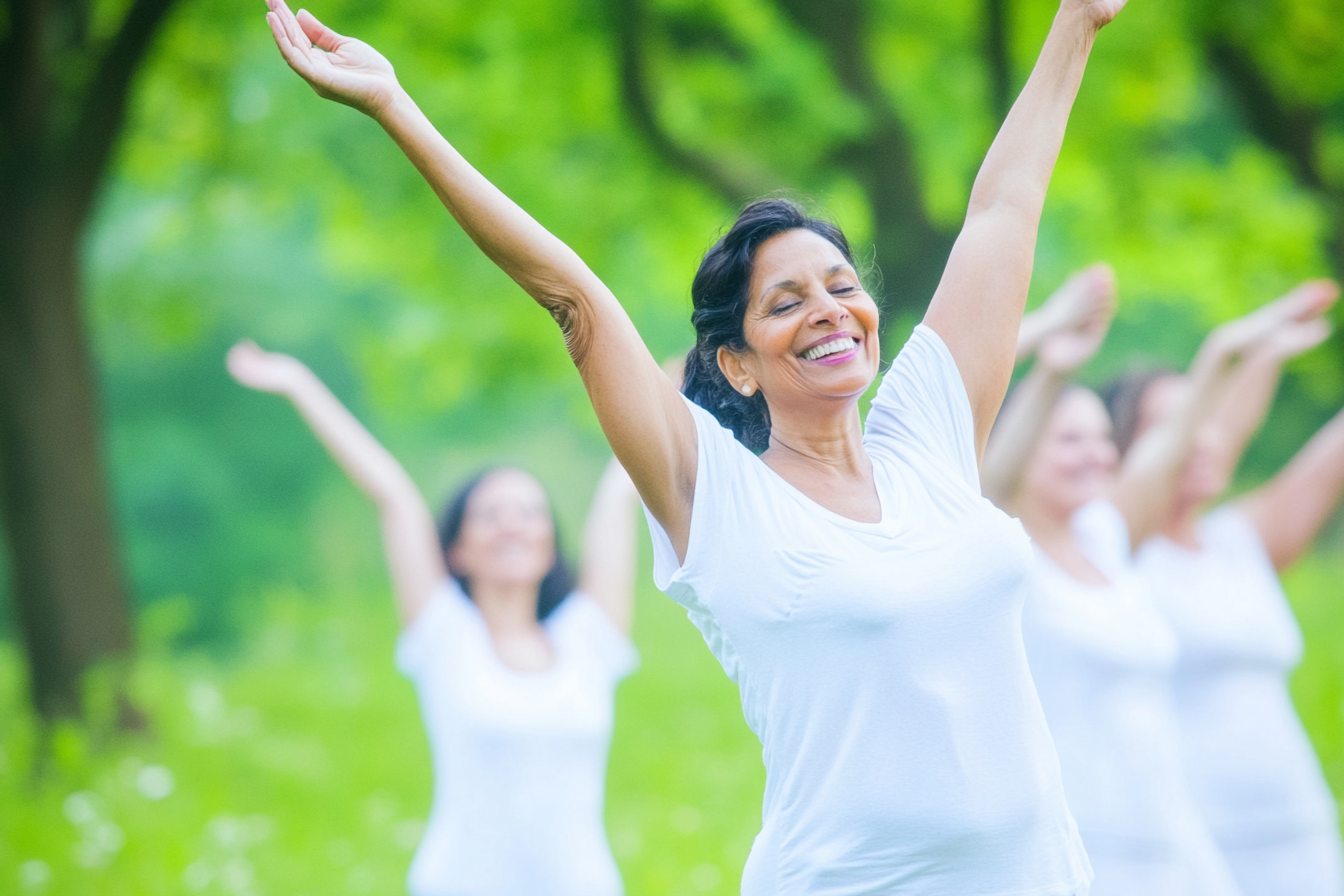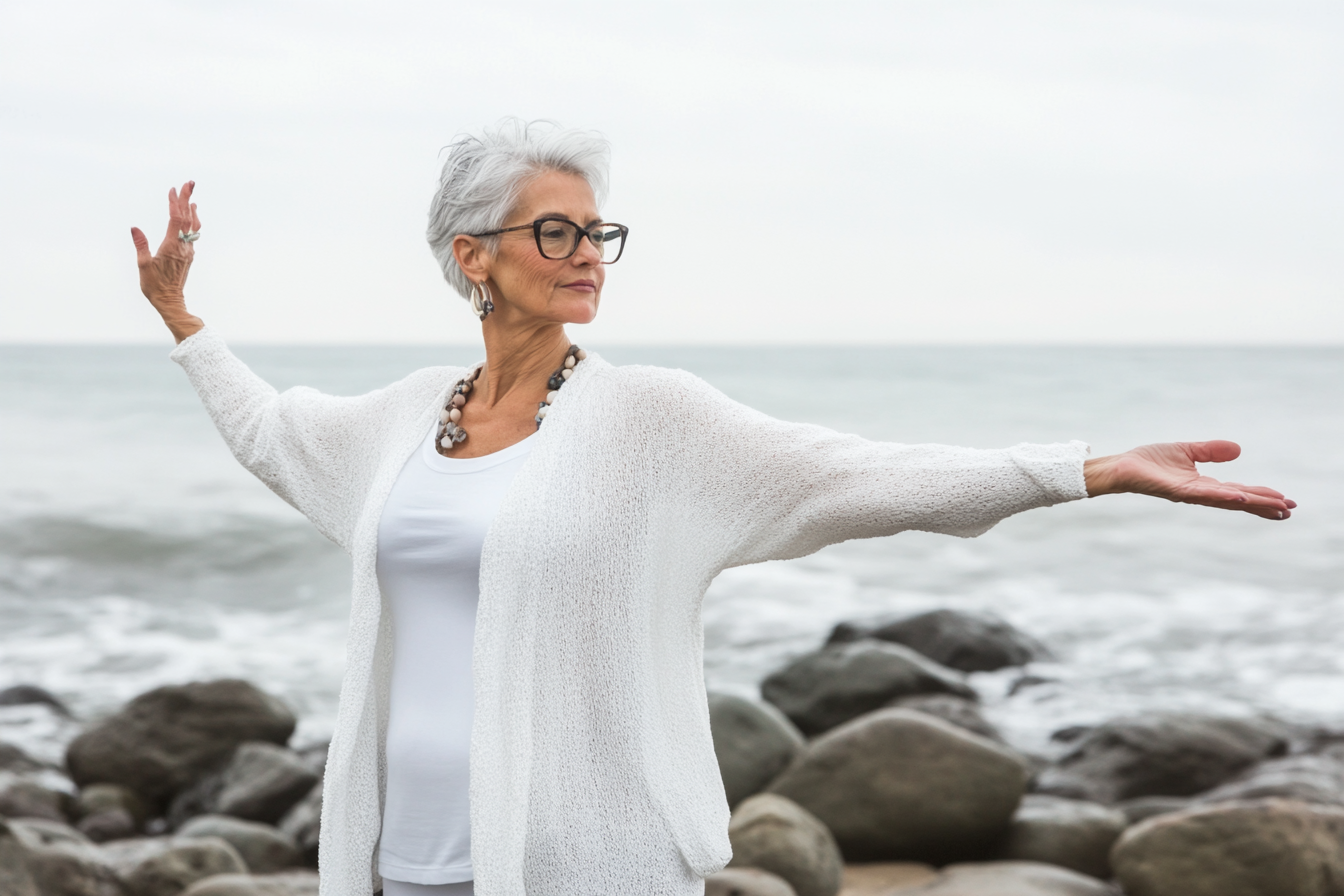From Challenges to Comfort: Palliative Care for Dementia Patients
Practical ways palliative care makes life more comfortable for dementia patients, addressing their physical and emotional needs with care.
Learn how to maintain independence, sharpness, and joy as you age. Discover the habits and strategies for healthy aging at every stage of life.

Aging well isn’t about avoiding the clock; it’s about working with it. How do you build a life that feels just as fulfilling at 60, 70, or beyond as it did at 30? The answer lies in the choices you make now—your routines, priorities, and even the mindset you carry into each day.
Healthy aging is about maintaining physical, mental, and social health. It’s not a secret formula but a set of habits accessible to anyone willing to take small, intentional steps. This article offers practical insights and evidence-based advice to keep your body strong, your mind sharp, and your connections meaningful as you age.
At its heart, healthy aging is a dynamic process—one that evolves with your needs and circumstances. It focuses on optimizing opportunities to enhance healthspan, maintain independence, and improve quality of life throughout your lifespan.
This concept goes beyond the absence of chronic diseases such as heart disease or diabetes. It includes staying active physically and mentally, fostering meaningful relationships, and adapting to life’s changes with resilience. As the Pan American Health Organization (PAHO) emphasizes, healthy aging is as much about the choices you make today as it is about the health outcomes you enjoy decades later.

Aging well involves a combination of deliberate habits and positive lifestyle choices. Evidence-based strategies include:
Engaging in at least 150 minutes of moderate to vigorous exercise weekly helps maintain muscle mass, improve cardiovascular health, and boost mental well-being. Activities like walking, swimming, or yoga can be tailored to suit your abilities and preferences.
This diet emphasizes fresh vegetables, fruits, whole grains, healthy fats, and lean proteins. It’s renowned for its benefits to heart and brain health and its role in reducing the risk of chronic diseases.
Mental stimulation plays a critical role in healthy aging. Activities like reading, solving puzzles, writing, or learning new skills can help maintain cognitive sharpness.
Staying socially active by maintaining relationships and engaging in community activities helps combat loneliness and boosts emotional well-being.

Physical activity is often called the closest thing we have to a fountain of youth. The World Health Organization recommends at least 150 minutes of moderate exercise per week for adults. For healthy aging, this routine is non-negotiable. Exercise reduces the risk of chronic illnesses like heart disease, diabetes, and osteoporosis while improving flexibility and balance—essential factors as we grow older.
Equally important is your diet. Healthy aging isn’t about restrictive eating but about balance. A nutrient-dense diet—rich in fruits, vegetables, lean proteins, and whole grains—supports every system in your body. Omega-3s for brain health, calcium for strong bones, and antioxidants to combat oxidative stress are more than dietary buzzwords; they’re tools to help you feel your best long into later life.

Your brain, much like your muscles, thrives on use. Activities that challenge your thinking—whether it’s reading a novel, learning a language, or playing strategy games—stimulate neural connections and help stave off cognitive decline.
This isn’t just about avoiding conditions like dementia; it’s about staying engaged in the world. A sharp mind helps you adapt to change, make decisions confidently, and even rediscover hobbies you thought you’d left behind. The key is variety: challenge your brain in ways that feel enjoyable, not just functional.
Stress is a natural part of life, but unmanaged stress can accelerate aging and harm physical and mental health. The solution lies in cultivating emotional resilience. Practices like mindfulness, journaling, and even regular laughter can lower cortisol levels and keep your outlook optimistic.
Healthy aging also involves a commitment to self-compassion. As we age, we encounter physical changes and lifestyle adjustments, but these don’t have to define us. Adopting a positive, growth-oriented mindset helps you navigate challenges and appreciate the unique joys of every stage of life.
Social engagement doesn’t just make life enjoyable; it’s essential for long-term health. Research shows that isolation is as harmful to your health as smoking or obesity, while strong social bonds boost longevity and happiness.
Healthy aging isn’t only about maintaining old friendships; it’s also about staying open to new ones. Volunteering, joining clubs, or participating in local events can provide opportunities to connect with others. Even small acts, like calling a neighbor or chatting with someone at a community center, add up to a robust social network.
Aging gracefully also means staying safe. Falls are a leading cause of injury among older adults, but they’re often preventable. Making small adjustments to your living environment—like securing loose rugs and installing better lighting—can make a significant difference.
Sun protection is another key element. Long-term UV exposure contributes to skin damage and increases the risk of skin cancer. A daily sunscreen habit and protective clothing are simple measures that pay dividends in maintaining your health over time.
How can you tell if you’re aging well? The signs often go beyond physical appearance. Hydrated skin, fewer wrinkles, and quick recovery from minor injuries can indicate good health, but they’re just the surface. The real markers of healthy aging are energy, adaptability, and a continued sense of curiosity about life.
When you invest in habits that promote health, you’ll notice it in how you feel each day—more capable, more present, and more connected to the world around you. Healthy aging is less about looking young and more about feeling vibrant, engaged, and at peace with the life you’ve built.

Aging well is not a mystery, though it sometimes feels like one. We see older adults who remain vibrant and engaged well into their later years, while others struggle. What separates these two outcomes often comes down to small, deliberate habits practiced consistently over time. Aging isn’t just a biological process; it’s also a behavioral one.
The "five pillars" of healthy aging—nutrition, hydration, physical activity, social connection, and mental stimulation—aren’t revolutionary. They’re straightforward principles that build a foundation for a rewarding life. Let’s take a closer look at each, step by step.
Think of your body as an ongoing construction project. Nutrition provides the raw materials. The food you eat builds your cells, fuels your energy, and keeps systems functioning. As you age, the construction slows, and the materials you choose become more critical.
Older adults often need more of certain nutrients—like calcium for bones or vitamin D for immune health—but fewer calories. This creates a balancing act: how do you get the nutrients you need without overeating?
Nutrition isn’t flashy, but its effects accumulate. A well-fed body performs better, heals faster, and feels stronger.
Here’s a surprising truth: many older adults live in a mild state of dehydration without realizing it. The body’s natural thirst signals weaken with age, but water remains essential to every process, from digestion to thinking.
Dehydration affects the brain first, causing fatigue or confusion that can be mistaken for age-related decline. In reality, the solution might be as simple as a glass of water.
Hydration doesn’t just only quench your thirst; it helps mental clarity, smooths out energy levels, and protects the body from unnecessary strain and stress.

Movement may be the most powerful tool in your arsenal for aging well. Regular physical activity keeps muscles strong, joints flexible, and balance steady. Movement combats the aches, stiffness, and arthritis that is often accepted as an inevitable outcome of aging.
What’s fascinating is how little movement is actually needed to make a big difference. A brisk 30-minute walk five days a week is enough to improve heart health, reduce fall risk, and even brighten your mood.
Movement doesn’t have to be extreme to be effective. It just needs to be consistent, a little bit every day makes an enormous difference.
Loneliness is one of the most overlooked threats to healthy aging. The human brain is wired for connection; it craves interaction and thrives on relationships. Isolation, on the other hand, increases stress hormones and contributes to depression, even physical illness.
The good news? Social connection doesn’t require a large circle of friends or endless activities. It’s about quality over quantity. One or two meaningful interactions can be more powerful than a full social calendar.
Relationships act as a buffer against life’s challenges, providing not just company but also a sense of purpose. Plus, there is a chance you might even enjoy visiting with others, which is a benefit unto itself!

Consider this: learning something new forms fresh neural connections, essentially building a reserve against cognitive decline. Reading, solving puzzles, or even mastering a new hobby all keep your mind flexible and engaged.
Mental stimulation doesn’t only protect memory; it keeps life interesting and meaningful. We say "use it or lose it" often when discussing physical exercise, but it also applies to mental exercise.